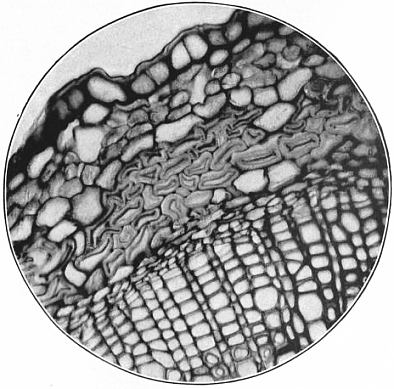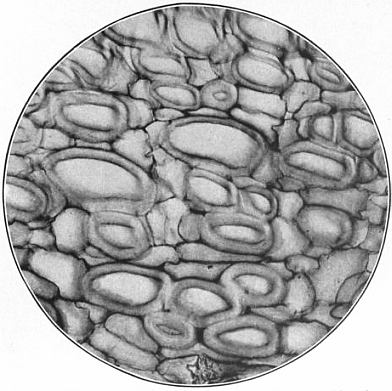 |
 |
Fig. 1.—RAW SILK. Bombyx mori. Filament of bave,
viewed in length. × 110. |
Fig. 2.—RAW SILK. Bombyx mori. Single fibres in transverse
section showing each fibre or “bave” as dual cylinder. × 235. |
 |
 |
Fig. 3.—ARTIFICIAL “SILK.” Lustra-cellulose viscose process,
single fibres in transverse section × 235. Normal type—polygon
of 5 sides—with concave sides due to contact of the
component units of textile filament. |
Fig. 4.—WOOL FIBRES. Australian merino viewed in length,
× 235. Surface imbrications—the structural cause of true
felting properties. |
 |
 |
Fig. 5.—FLAX STEM. Linum usitatissimum, tranverse section
of stem, × 235, showing bast fibres occupying central zone. |
Fig. 6.—RAMIE. Section of bast region, × 235. Showing bast
fibres bundles but only slightly occurring as individuals. |
